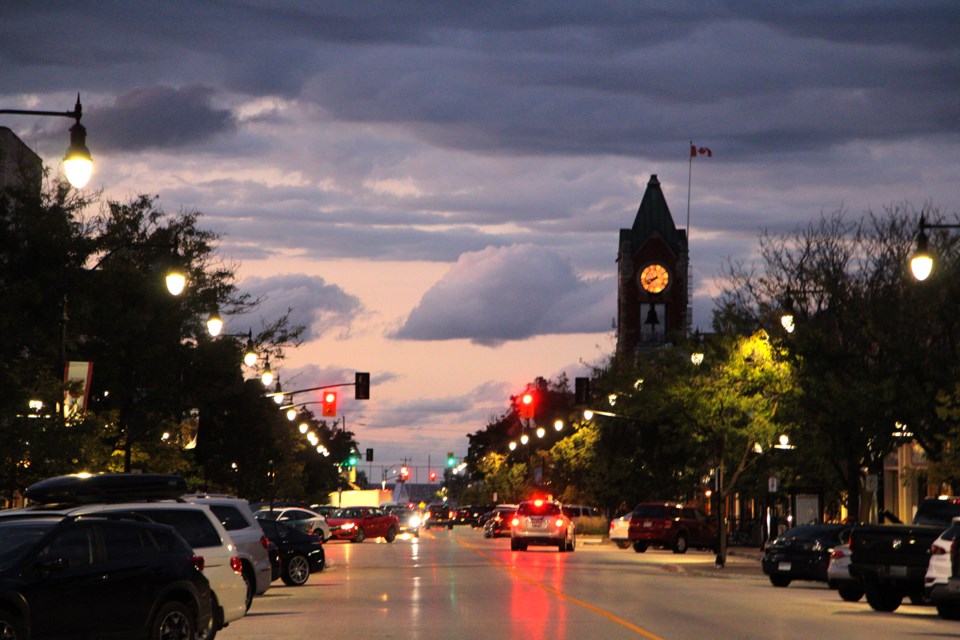As Collingwood grows, some members of council grew concerned the development industry might not be keeping up to the demand for more houses.
A staff report presented earlier this week can set their minds at ease … sort of.
According to forecasts for population growth, Collingwood should have a population of 33,400 people by 2031, and based on a report from town staff, there should be enough homes for them all by then too.
Based on information provided by Collingwood staff, there are 5,971 potential units in various states of approval to be built within the boundaries of Collingwood. If they are built, Collingwood’s population will hit the 2031 target set by the province of Ontario (see the Growth plan for the Greater Golden Horseshoe).
Collingwood has been identified as a primary settlement area, and substantial growth has been allocated to the town by planning documents from the province and the county.
Collingwood Director of Planning and Building Services, Adam Farr, delivered a staff report, written by community planner, Mark Bryan, to the development and operations services standing committee on June 17 to provide council with an analysis of the supply of units in Collingwood as it compares to the forecasted growth in population.
“The total number of residential units within approved and proposed development applications may satisfy the 2031 population allocation target for Collingwood,” states the report. “However … forecasting is an uncertain, inexact science, impacted by a variety of factors.”
The report does state there are a potential 5,971 units proposed in Collingwood, but they must still be built.
While the average number of residential building permits has gone up from 250 per year (15-year average) to about 300 per year (five-year average), it would have to increase to 460 per year (an increase of 84 per cent) in order for the current inventory of proposed development to be built by 2031, according to the staff report.
The current supply of 5,971 potential residential units was further broken down in the report to show there are 909 units that are site plan and subdivision approved. These are approved developments that have the greatest level of certainty in terms of how many units will be built and the timing of the build. These are, essentially, the plans that are furthest along.
There are 2,483 units with draft approved plans of subdivision. According to the report, these developments “form the next rung on the supply hierarchy.” These have some certainty and provide some detail - though not final - on what will be built and when.
Finally, approximately half of the units (2,579 units) are part of proposed developments with a variety of application types. Since these developments, for the most part, have not secured approvals, they represent the greatest uncertainty when it comes to quantity, mix, and timing.
Staff used the 2016 census data to make calculations to decide whether the proposed units would indeed house the population growth.
In 2016, the census showed Collingwood’s permanent population of 21,793 people lived in 9,556 units. The census also showed about 18 per cent of Collingwood’s residents do not live here permanently.
So, at 2.28 people per unit at an 18 per cent seasonal occupancy, the 2031 projected population of 34,950 will fit in all the proposed housing, provided it is built.
Though the province hasn’t yet released the forecasts for 2041, Collingwood staff are expecting the new population prediction for Collingwood to be between 40,000 and 42,000.
For that many people, Collingwood is going to need more development proposals.
“The anticipated 2041 population allocation target … will not likely be met by the current supply of units in the town’s residential registry,” states the report. “A more fulsome consideration of land supply may be warranted.”
The key, according to the director of planning, is solid land-use planning policy to ensure the are places where development and to make sure the development is the best use of the land while also meeting the needs for housing in town.
Farr told the committee it would be best to ensure the effectiveness of the town’s land-use policy and framework, “to maintain the character and quality of life the community enjoys.”
That means keeping an eye on the town’s inventory of residential units and the issues affecting population forecasting such as building permits, changes to demographic characteristics (like household size and seasonal occupancies) and development applications.
Bryan’s report will go to council at the regular meeting on June 24.


